Menus
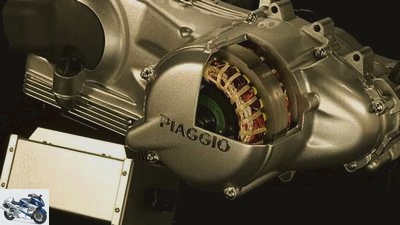
Piaggio
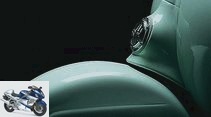
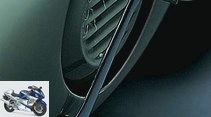

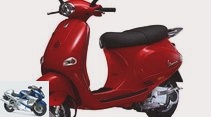
30th photos
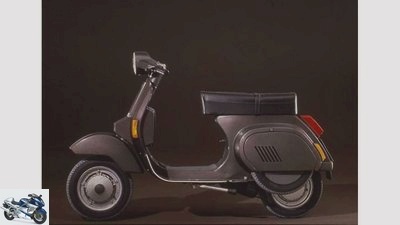
Piaggio
1/30
1983 comes the Vespa PK 50. In the picture one of the extremely rare PK 50 Automatica, which came onto the market later and differs from the normal PK through the air slots in the side cover.
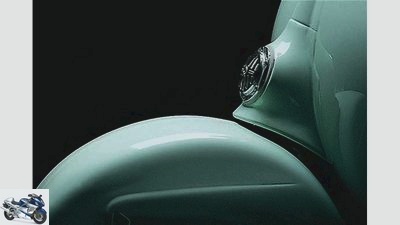
Piaggio
2/30
1963: Vespa 50.
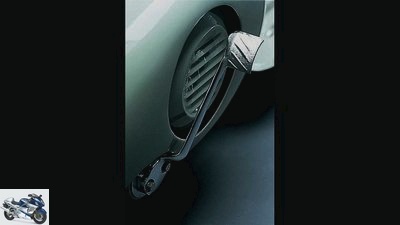
Piaggio
3/30
1946.
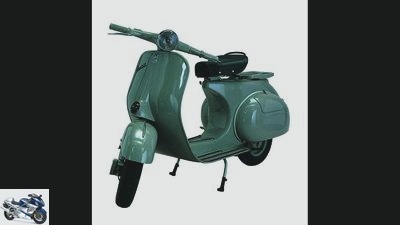
Piaggio
4/30
1958: Vespa 125.
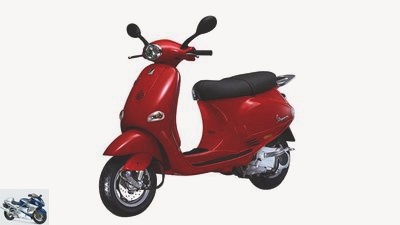
Piaggio
5/30
1996: Vespa ET4.
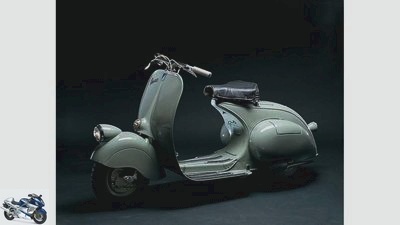
Piaggio
6/30
1946: the 100 cubic Vespa sees the light of day.
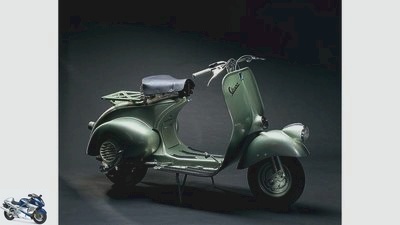
Piaggio
7/30
1948: Vespa 125.
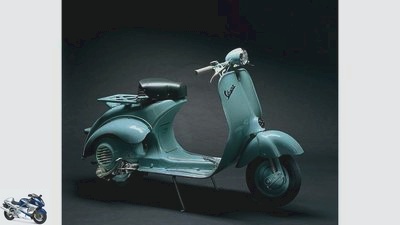
Piaggio
8/30
1953: Vespa 125 U.
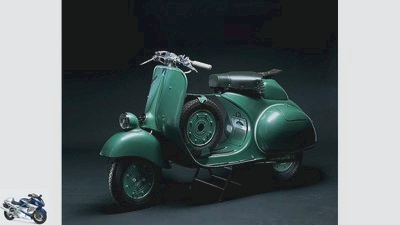
Piaggio
9/30
1952: Vespa Seigiorni (six days).
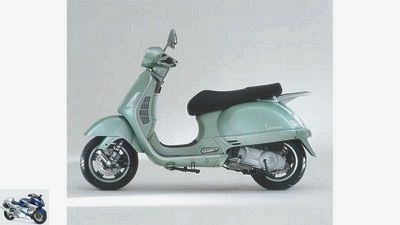
Piaggio
10/30
2003: Vespa Granturismo.
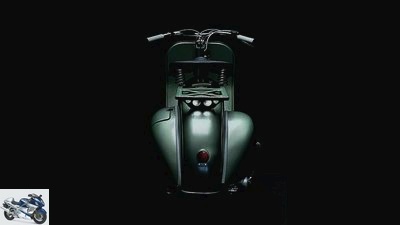
Piaggio
11/30
1948: Vespa 125.
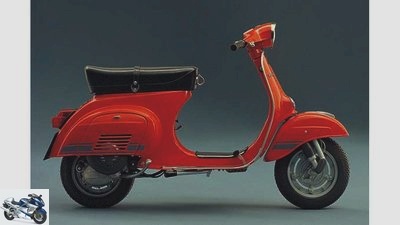
Piaggio
12/30
1976: Primavera ET3.
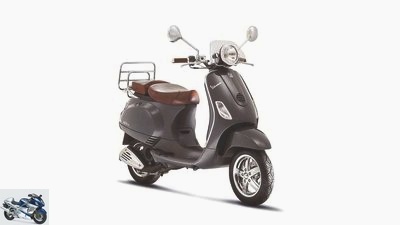
Piaggio
13/30
2006: Vespa LXV 125.
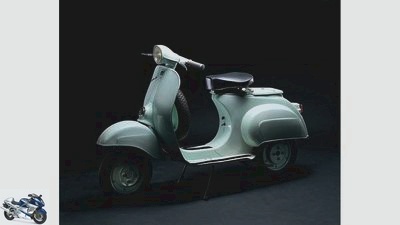
Piaggio
14/30
1963: Vespa 50.
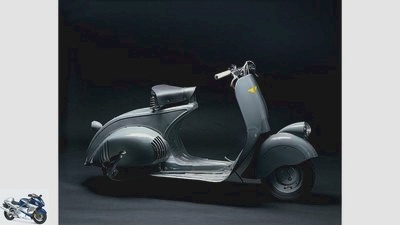
Piaggio
15/30
1945: Vespa prototype MP6.
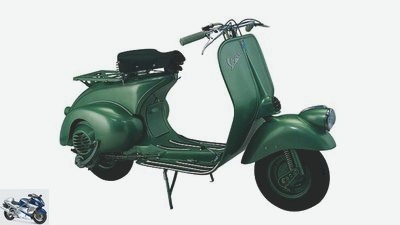
Piaggio
16/30
1949.
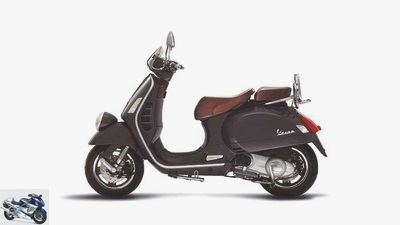
Piaggio
17/30
2006: Vespa GTV 250.
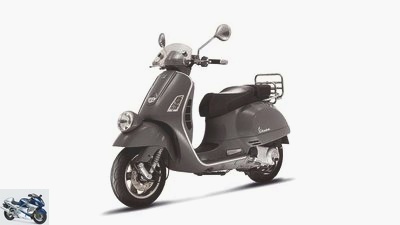
Piaggio
18/30
2006: Vespa GT 60 (limited special model).
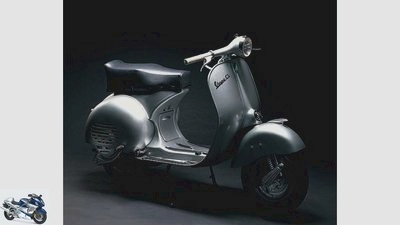
Piaggio
19/30
1955: Vespa 150 GS.
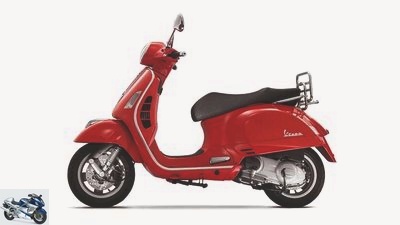
Piaggio
20/30
2005: Vespa GTS 250 i.e.
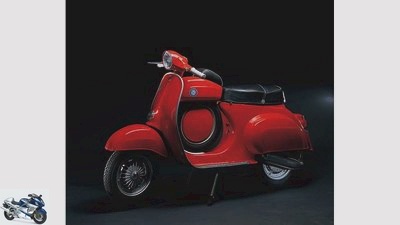
Piaggio
21/30
1966: Vespa 90 SS.
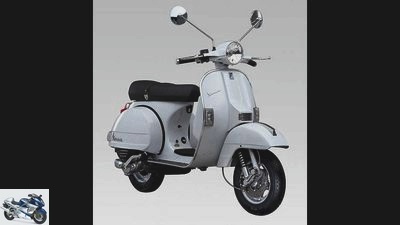
Piaggio
22/30
1977 the Vespa PX sees the light of day. The picture shows the current PX 125/200 FL DT, as it has been offered since 2001 (recognizable by the clear glass, white indicators and lots of chrome). The original PX also didn’t have a front disc brake.
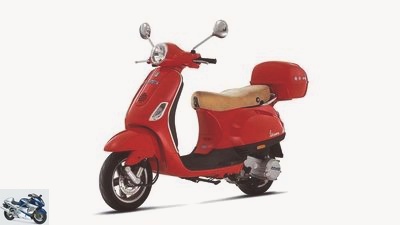
Piaggio
23/30
2006: Vespa LX 50 HyS (Hybrid).
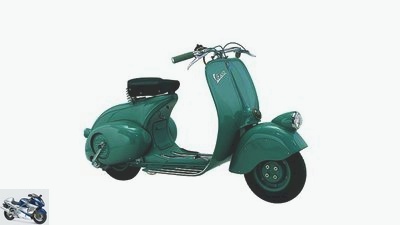
Piaggio
24/30
1946.
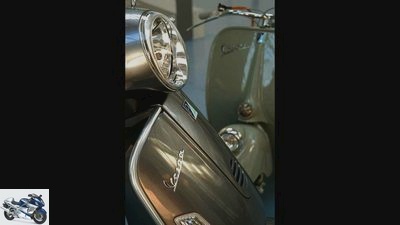
Piaggio
25/30
Then and now: Vespa from 1946 and 2006.
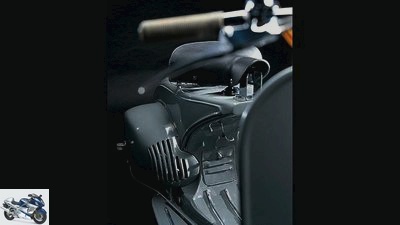
Piaggio
26/30
Detailed view of the prototype.
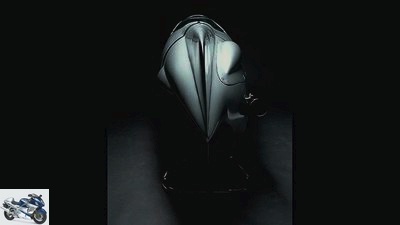
Piaggio
27/30
1951: Vespa Siluro.
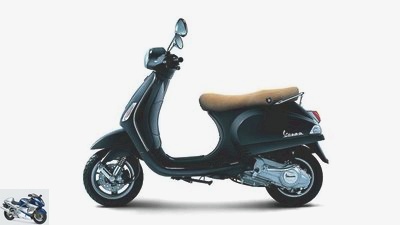
Piaggio
28/30
2005: Vespa LX 50/125/150
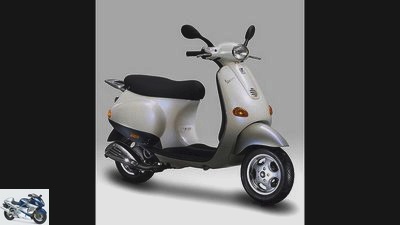
Piaggio
29/30
2000: Vespa ET2 with 50 cubic meters.
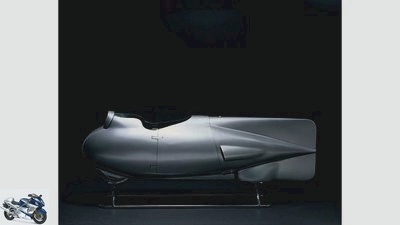
Piaggio
30/30
1951: Vespa Siluro.
Already driven: Hybrid engine from Piaggio
Hybrid – you can also do without smoke
Piaggio’s hybrid scooters of the future will drive noiselessly and without emissions when required. MOTORRAD was able to try out the prototypes.
Roberto Colaninno let himself be carried away: “In decades,” the otherwise cool Piaggio President exclaimed enthusiastically in front of around 200 journalists from all over the world, “we will remember that we were there on this historic day!” Reason for the unusual emotional appearance was the first public presentation of the house’s hybrid scooter.
A combination of gasoline and electric motors should drastically reduce consumption and emissions in the scooters. The technology is not new: Toyota has already sold a million Prius hybrid cars worldwide and has since become the world’s largest car manufacturer. Piaggio now has the ambition to bring the first hybrid two-wheeler onto the market? And with it, there are definitely opportunities, like Toyota, to significantly increase its sales. No wonder that the 64-year-old Piaggio boss Colaninno went crazy with such prospects.
But the hybrid scooters called HyS are still in the prototype stage and are therefore under special protection. Just a handful of journalists ?? including MOTORRAD as the only foreign magazine ?? was allowed to try out the rolling laboratories.
Three vehicles were available on Piaggio’s in-house test track in Pontedera, Tuscany: a Vespa LX 50, a Piaggio X8 125 and an MP3 250, Piaggio’s innovative tricycle. Outwardly, they hardly differ from the standard models, because the technicians cleverly placed the electric motor on the automatic clutch of the scooter on the rear wheel, only the housing was a bit lush. Only a look under the seat reveals more: the batteries are made of lead on the Vespa and X8, and lithium on the MP3. There is still space for luggage or a helmet. The Vespa has a color-coordinated top case for this purpose.
On to the first round. A little instruction is required, however, as the three hybrids have a selector switch for the driving mode. Except in pure electric mode, the gasoline and electric motors always work in parallel, the batteries are charged when braking and when coasting when you take off the accelerator? how strong can be set via said switch. For a start, Piaggio’s project manager Luca Carmignani recommends standard mode. The combustion engine contributes 65 percent and the electric unit 35 percent of the output.
The whole thing drives almost disappointingly normal, differences to the conventional models cannot be ascertained ad hoc. Only the MP3 provides a little thrill: thanks to its two front wheels, it allows you to tilt up to the edge of the fairing. So that it stays that way with the hybrid despite the thicker clutch housing, the engineers have given it a 14-inch instead of the standard 12-inch rear wheel.
But we want more? namely the ultimate hybrid experience. And it actually comes. Initially with the “low charge” driving mode. The batteries are hardly charged, the electric motor provides almost all of its power. And that has an effect: the scooters pull off from a standstill. And that robust. Piaggio speaks of an increase in acceleration of up to 85 percent. What completely new possibilities when starting the traffic light? and (almost) without a guilty conscience, as the scooters also consume very little gasoline in this mode. Ideally, consumption should be just 1.7 liters per 100 kilometers.
But the hybrids can be very different? namely purely electric. In Italy, the motherland of the scooter in particular, there is lively interest in electric vehicles; more and more cities are closing their centers to normal traffic due to smog and fine dust. For the hybrids, such restricted zones are not an obstacle if they are set to electrical operation using a selector switch. “Before that, brake to around 30 km / h and then simply switch over,” advises project manager Carmignani. And indeed, the combustion engine goes silent and the journey continues on purely electric basis. The scene looks like something out of a surreal film: A mini racetrack with colored curbs and banked bends on which three scooters chase each other ?? and apart from the rolling noise of the wheels, no sound can be heard. Almost spooky.
But of course Piaggio did not develop the hybrids for the racetrack. The scooters are only suitable for long distances if the petrol engines are the main source of power. They are primarily intended for cities. After the first driving impression, the hybrid scooters should cut a good figure there: low-emission, purely electric if desired and with better driving performance in certain modes. The technology is also practical to use, as the batteries charge while driving. If that is not enough, they are plugged into a normal socket at home.
As the first hybrid, an MP3 125 should come onto the market in about a year, with lithium batteries. According to Piaggio, these batteries have a lifespan six times as long as the lead-acid batteries that have been common up to now, are only half the size and weigh 70 percent less. Which is why the hybrid MP3 should only weigh 20 kilograms more than the normal model, i.e. around 220 kilograms dry.
Piaggio chose the 125cc version for the start, because in many countries it can also be driven with a car driver’s license. And it has to be the MP3 three-wheeler because you can kill two birds with one stone: “Compared to standard scooters, we are not only offering a more environmentally friendly, but also a safer vehicle,” says Piaggio boss Colaninno confident. The price for the technology, which is new in the two-wheeler sector, is likely to be rather high: The provisional statement “less than 10,000 euros” does not sound like a special offer.
Technology in detail
The hybrid drive of the Piaggio scooter consists of an electric and a four-stroke petrol engine, which are mechanically and electronically linked. If necessary, the combustion engine can be switched off and the journey continues without any noise or emissions. Otherwise, the units work in parallel, with the electric motor intervening, which leads to significantly improved performance, especially when accelerating. When braking and coasting, it acts as a generator and uses the braking energy to recharge its batteries, which would otherwise be ineffective.
Piaggio did not invent this technology, but is the first manufacturer to implement it for the series production of two-wheelers. The electric motor sits above the automatic clutch of the scooter, the batteries are located under the seat bench. A ride-by-wire system takes over complete control. It ensures that the combustion engine works as effectively as possible and thus already reduces its pollutants. Piaggio specifies a minimum of 40 g / km carbon dioxide emissions compared to 90 g / km for conventional scooters, provided that the electric motor contributes 35 percent of the power. In addition, the system constantly analyzes various parameters, for example the state of charge of the battery, and then decides which of the two motors has to provide how much power. Piaggio promises maximum efficiency for its hybrid scooters, namely fuel consumption that is reduced by up to 60 percent and acceleration is up to 85 percent better.
On the Piaggio prototypes that MOTORRAD drove, the driver can also influence how the system should work, using a selector switch on the handlebar. In addition to reverse gear and pure electric operation, three different drive levels are available: In the “Hybrid Standard”, the battery charge level is kept at an optimal level (75 percent). In “high charge” mode, more energy goes to the batteries, which are charged to 95 percent. Most fun is the “low charge” mode: The batteries are kept at a level of only 20 percent charge, the electric motor puts all its power to the service of the scooter. The result: gasoline consumption and emissions decrease, while power output increases significantly. It is not yet clear whether these selectable modes will also be retained in the production vehicle.
Interview with Luca Carmignani
The head of the engine innovation department at Piaggio, Luca Carmignani, talks about the development of the hybrid scooter.
How long has the development of hybrid engines been going on??
Since 2001, in collaboration with the University of Pisa. At Piaggio we are now a group of ten people.
What is your practical experience with the vehicles??
The scooters are not only tested by our test drivers, but also outside. Two Vespa LX 50 and Piaggio X8 125 have been in daily use by the city councils of Milan and Florence for a year. So far, this practical test has been very successful.
In electric mode, the scooters have a range of 20 kilometers. Isn’t that a little bit?
We actually think it’s a lot. The Toyota Prius only manages nine kilometers. Our range of 20 kilometers is easily sufficient for those restricted areas in which combustion engines are now taboo, for example in the old towns of Rome or Florence. In addition, the batteries recharge quickly via the combustion engine when you leave the restricted areas: The batteries generate power for 2.5 kilometers in pure electric mode within ten minutes of driving.
All three prototypes that we tried are quite slow in electrical operation. Can’t they go faster?
Oh yes, absolutely. The 50 series Vespa can reach 45 km / h with an electric motor, the 125 and 250 series even 60 km / h. But we deliberately limited the speed in electric mode, with the 50s to 25 km / h, with the other two to 35 km / h. On the one hand, this increases the range, on the other hand, we consider higher speeds to be dangerous. Mainly pedestrians and cyclists move in the aforementioned restricted areas, and when a 200-kilogram scooter like the MP3 arrives with 60 items, accidents are almost inevitable, because it drives completely silently.
The MP3 hybrid scooter, which is due to hit the market in around a year, will be equipped with lithium batteries. How long is their lifespan?
It is around 30,000 kilometers, which corresponds to around five years for an average Italian scooter driver. You can then replace the batteries, but it’s too early to talk about costs.
The batteries for the electric motor can be charged not only via the combustion engine, but also via the power grid. How long does it take?
Until they are completely full, three hours. But after two hours they are already at 85 percent charge, so you can start again with confidence.
Piaggio had already presented a hybrid scooter in 1998, the Zip&Zip. But it wasn’t a success. Why should it be any different now??
The zip&Zip had a different technology, there was only either electric or gasoline operation, not both together, and its batteries did not charge while driving, so the range was short. In addition, at least in major Italian cities, there are charging stations for electric vehicles now, which weren’t there back then. And then of course the climate also changed, both atmospherically and politically. More and more cities are closing their centers for normal traffic or levying tolls. Therefore, there is now a much greater demand for environmentally friendly vehicles.
Related articles
-
Bilski Test: Piaggio MP3 The new Piaggio MP3 with hybrid drive In the form of the 125cc three-wheel scooter, the hybrid drive is now finding its way into the world of …
-
Driving report: Piaggio MP3 Hybrid 125
Milagro driving report Piaggio MP3 Hybrid 125 (2009) The world’s first hybrid series two-wheeler As the world’s first manufacturer, the Italian …
-
Presentation: Piaggio MP3 Hybrid 300ie
Piaggio Presentation: Piaggio Piaggio MP3 Hybrid 300ie The latest hybrid version of the Piaggio tricycle was honored in the city of love. You can find…
-
Wunderlich hybrid BMW X2 in the driving report
11 pictures 1/11 Integrated quite inconspicuously: The electric motor in the front wheel hub is only noticeable at second glance …
-
Already driven: Piaggio MP3 Yourban 300
Piaggio Driving report: Piaggio MP3 Yourban 300 New tricycle from Piaggio The Yourban expands the Piaggio MP3 range with a shorter and more elegant…
-
Ducati 1199 Panigale S already driven
Manufacturer 15 pictures 1/15 Grim look: LED headlights are being used for the first time in a motorcycle. 2/15 Ducati 1199 …
-
Already driven: Innoscooter Retro-L
Bilski Already driven: Innoscooter Retro-L Electric scooter Because eco is boring: The Innoscooter Retro-L is not only friendly to the environment, but…
-
Already driven: Sym Maxsym 400i
Photos: Sdun Already driven: Sym Maxsym 400i Sofa roller Sym Maxsym 400i The ingredients for sofa rollers are known, the customers are spoiled. If Sym…
-
Piaggio Medley 125-150: New look, new engine, new features
Motorcycle fair in Milan EICMA 2019 Presented by Piaggio 10 photos Piaggio 1/10 Piaggio presented the revised Roller Medley at EICMA. Piaggio 2/10 It is…
-
Yamaha XT 660 X (2007 model) already driven
Yamaha XT 660 X Driving report Yamaha XT 660 X, model 2007 The new Yamaha XT The first look is deceptive: It’s not a KTM. Despite wide handlebars, despite …